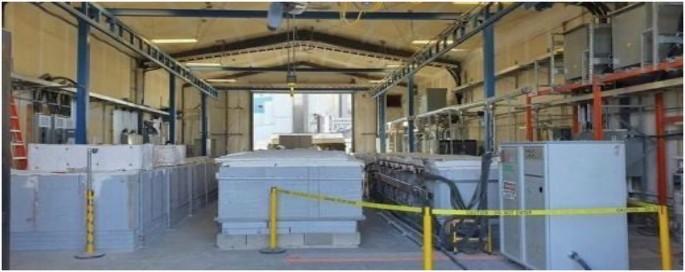A new electrolyte for molten carbonate decarbonization
IF 5.9
2区 化学
Q1 CHEMISTRY, MULTIDISCIPLINARY
引用次数: 0
Abstract
The molten Li2CO3 transformation of CO2 to oxygen and graphene nanocarbons (GNCs), such as carbon nanotubes, is a large scale process of CO2 removal to mitigate climate change. Sustainability benefits include the stability and storage of the products, and the GNC product value is an incentive for carbon removal. However, high Li2CO3 cost and its competitive use as the primary raw material for EV batteries are obstacles. Common alternative alkali or alkali earth carbonates are ineffective substitutes due to impure GNC products or high energy limitations. A new decarbonization chemistry utilizing a majority of SrCO3 is investigated. SrCO3 is much more abundant, and an order of magnitude less expensive, than Li2CO3. The equivalent affinities of SrCO3 and Li2CO3 for absorbing and releasing CO2 are demonstrated to be comparable, and are unlike all the other alkali and alkali earth carbonates. The temperature domain in which the CO2 transformation to GNCs can be effective is <800 °C. Although the solidus temperature of SrCO3 is 1494 °C, it is remarkably soluble in Li2CO3 at temperatures less than 800 °C, and the electrolysis energy is low. High purity CNTs are synthesized from CO2 respectively in SrCO3 based electrolytes containing 30% or less Li2CO3. The transformation of CO2 to oxygen and graphene nanocarbons using lithium carbonate as an electrolyte is a promising, large-scale process for CO2 removal and valorization, but lithium carbonate is already in high demand as an important battery material. Here, the authors report the use of strontium carbonate as an alternative electrolyte in the electrochemical reduction of CO2 to carbon nanotubes.

用于熔融碳酸盐脱碳的新型电解质
将二氧化碳转化为氧气和石墨烯纳米碳(GNC)(如碳纳米管)的熔融 Li2CO3 是一种大规模去除二氧化碳以减缓气候变化的工艺。可持续发展的好处包括产品的稳定性和储存,而 GNC 产品的价值则是碳清除的激励因素。然而,高昂的 Li2CO3 成本及其作为电动汽车电池主要原材料的竞争性用途是障碍。由于 GNC 产品不纯或高能量限制,普通的碱或碱土碳酸盐替代品效果不佳。本文研究了一种利用大部分 SrCO3 的新型脱碳化学。SrCO3 的含量比 Li2CO3 高得多,价格也低一个数量级。实验证明,SrCO3 和 Li2CO3 吸收和释放二氧化碳的亲和力相当,与所有其他碱和碱土碳酸盐不同。二氧化碳转化为 GNCs 的有效温度域为 800 °C。虽然 SrCO3 的固相温度为 1494 ℃,但它在低于 800 ℃ 的温度下可明显溶于 Li2CO3,且电解能量较低。在含 30% 或更少的 Li2CO3 的 SrCO3 基电解质中,可分别从 CO2 合成高纯度的 CNT。利用碳酸锂作为电解质将二氧化碳转化为氧气和石墨烯纳米碳,是一种很有前景的大规模二氧化碳脱除和价值化工艺,但碳酸锂作为一种重要的电池材料,需求量已经很大。在此,作者报告了在电化学还原二氧化碳到碳纳米管的过程中使用碳酸锶作为替代电解质的情况。
本文章由计算机程序翻译,如有差异,请以英文原文为准。
求助全文
约1分钟内获得全文
求助全文
来源期刊

Communications Chemistry
Chemistry-General Chemistry
CiteScore
7.70
自引率
1.70%
发文量
146
审稿时长
13 weeks
期刊介绍:
Communications Chemistry is an open access journal from Nature Research publishing high-quality research, reviews and commentary in all areas of the chemical sciences. Research papers published by the journal represent significant advances bringing new chemical insight to a specialized area of research. We also aim to provide a community forum for issues of importance to all chemists, regardless of sub-discipline.
 求助内容:
求助内容: 应助结果提醒方式:
应助结果提醒方式:


